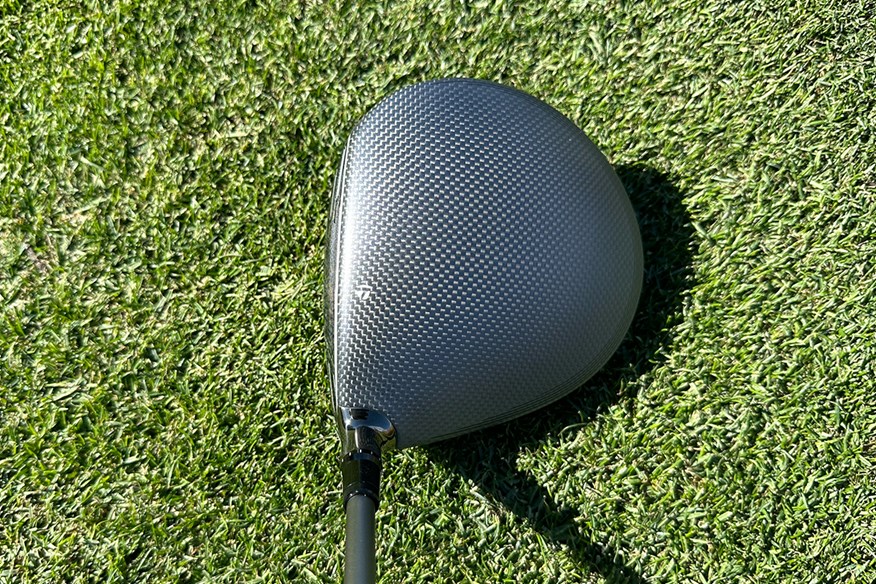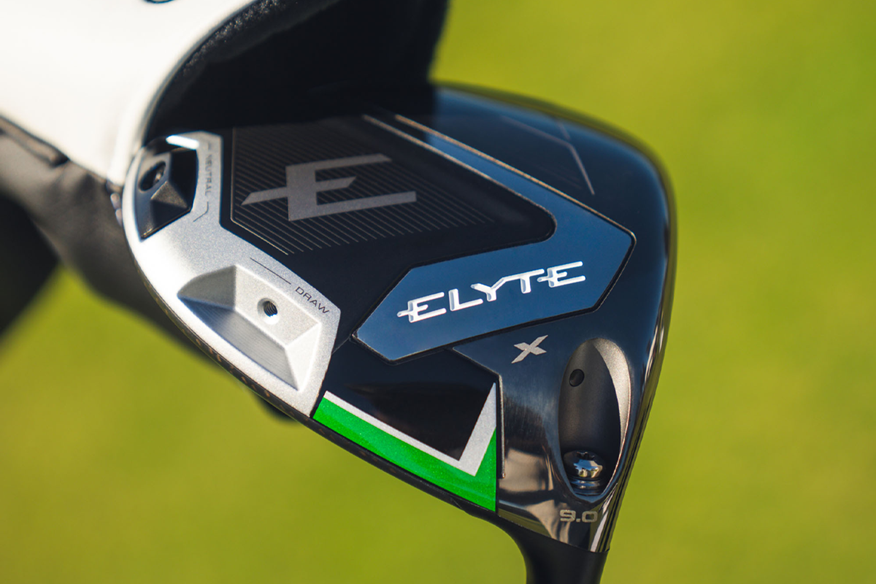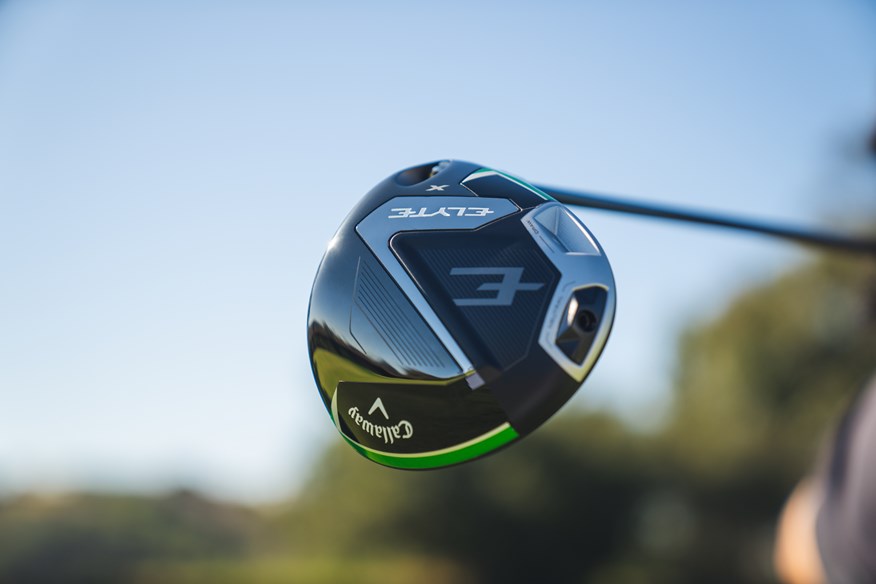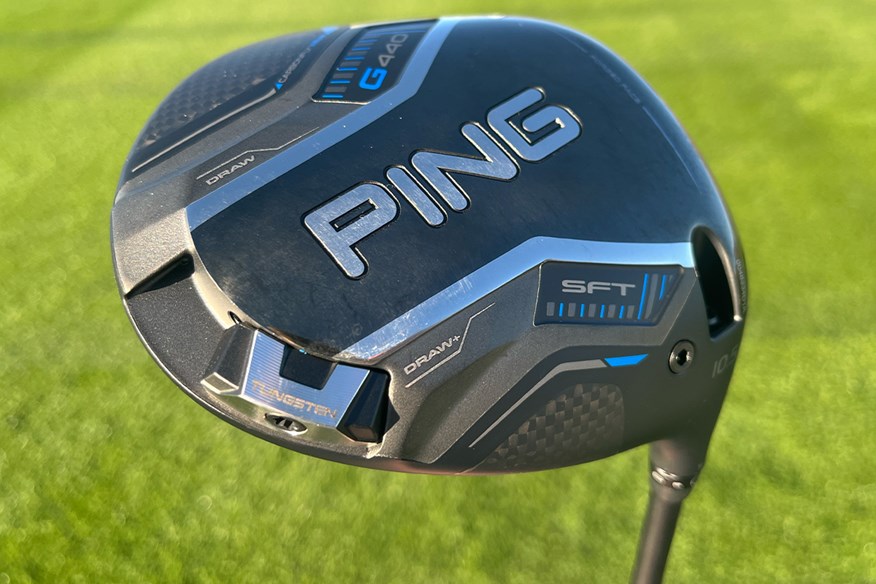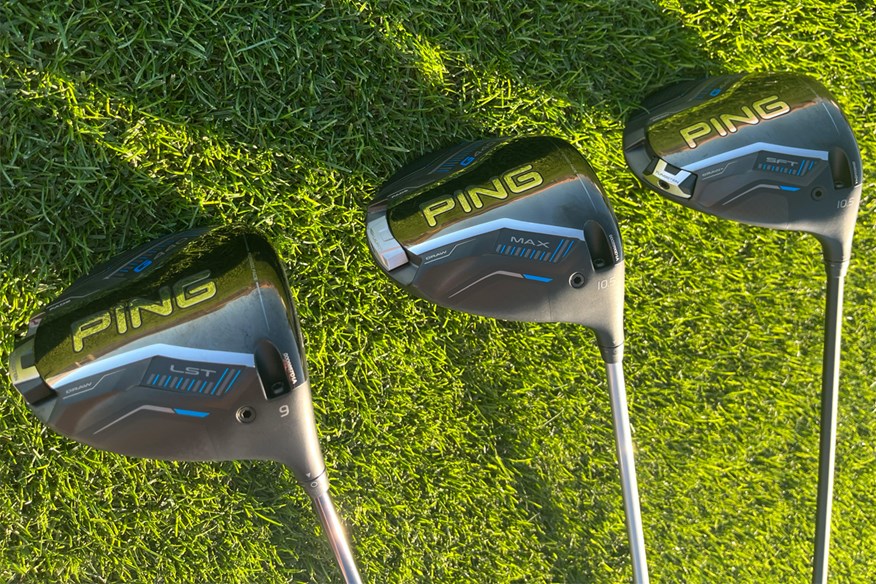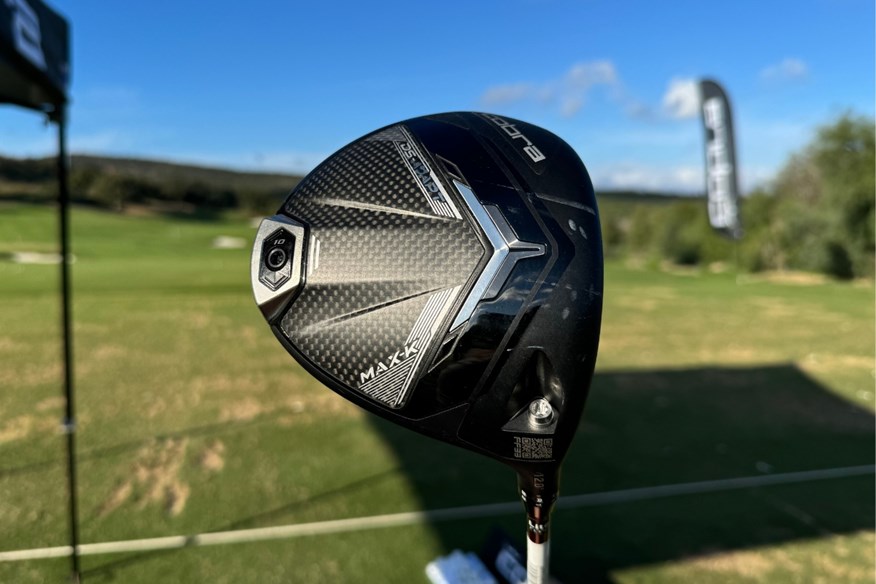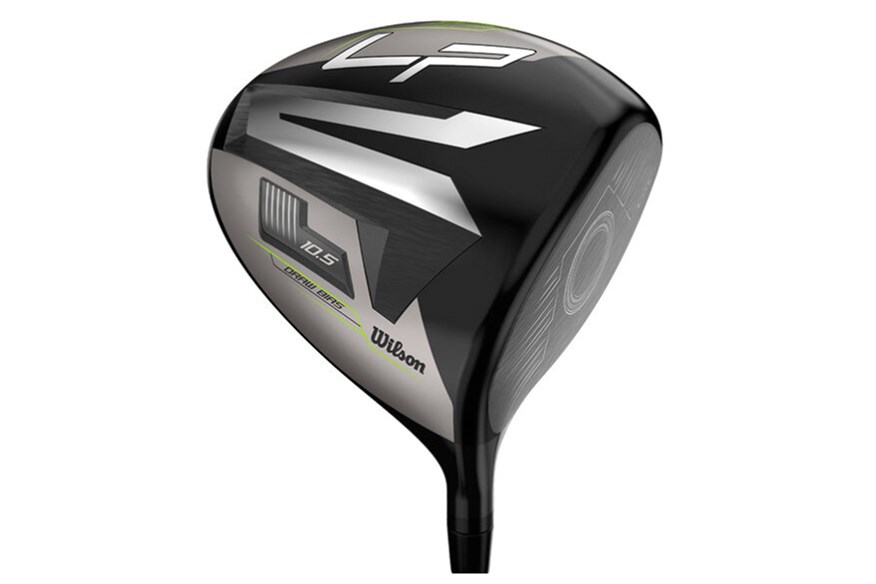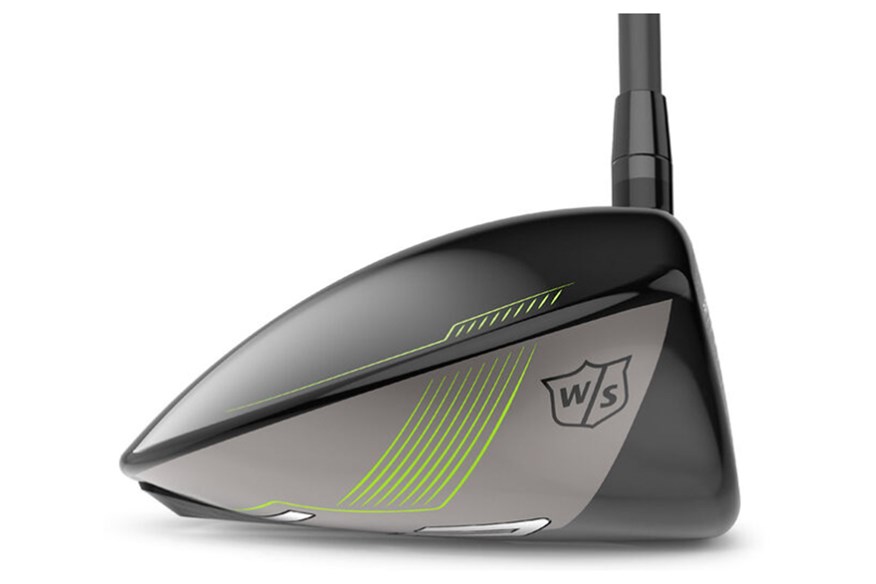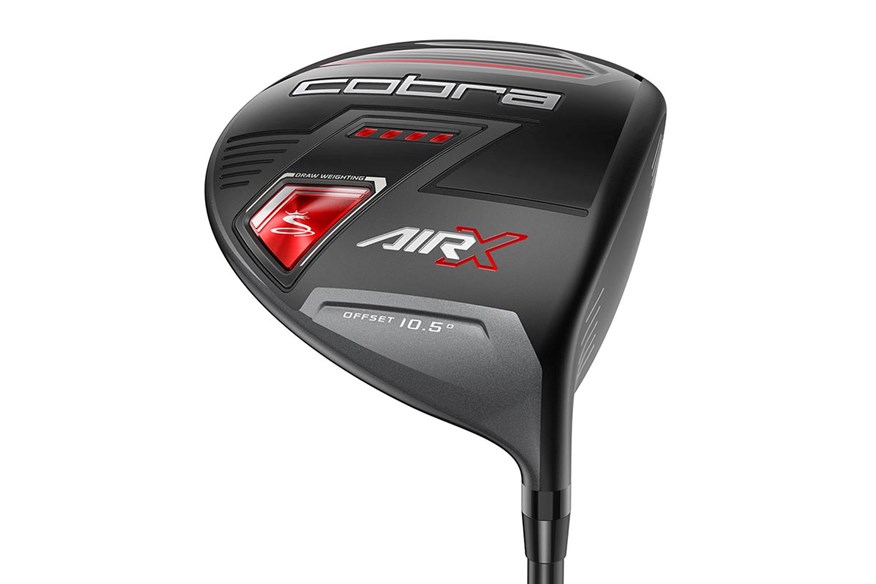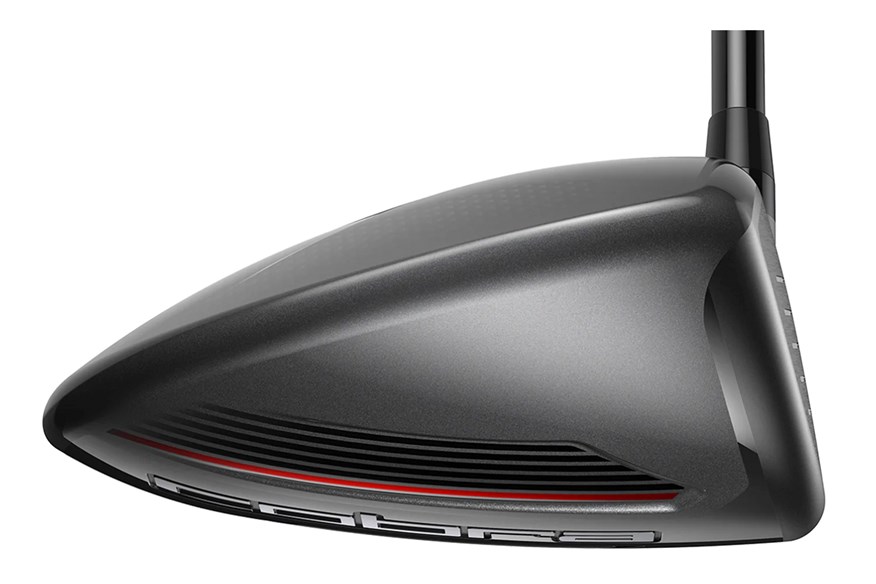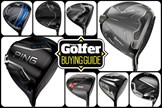Best Drivers for Beginners and High Handicappers 2025: Gain yards and keep your ball on the fairway
Last updated:
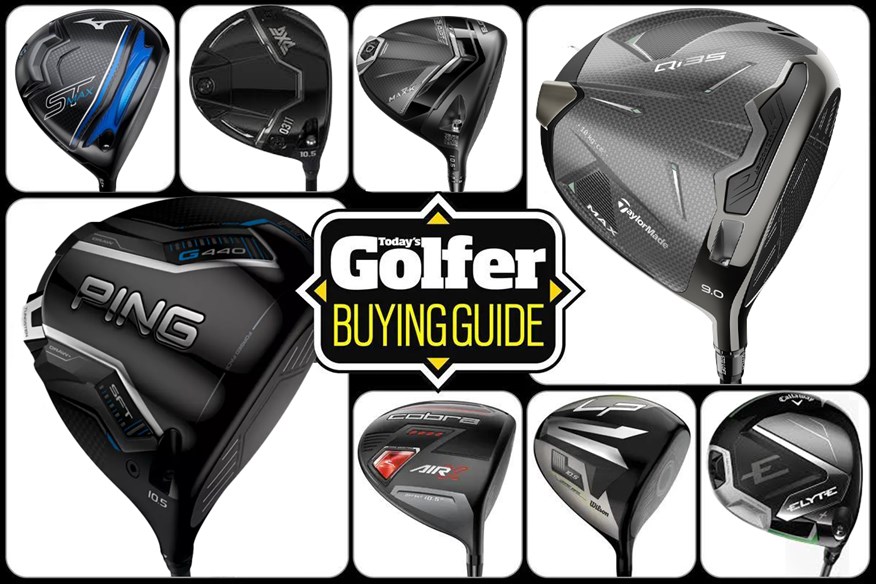
What are the best drivers for beginners and high handicappers to get your scores tumbling in 2025? We look at the best clubs for forgiveness, stability, and control
When we’re struggling with a part of our game, it can be one of the most frustrating things to deal with. Driving is particularly aggravating as it can set up the rest of the hole for us in a positive way, but not doing well can see us find double or triple bogeys far too regularly. So finding the best drivers for beginners (or those of us who have been playing for a little while but still find consistent drives to be an issue) is a massive part of ending that frustration.
What can we look for in drivers to help out with our tee shots then? One of the largest factors is the forgiveness on offer but what does actually mean; typically, we’re talking about help across the face regardless of strike location.
The phrase you’ll hear often when looking for that factor is ‘moment of inertia’ or MOI.
MOI refers to the resistance of the club head to twisting on off-center strikes. The more manufacturers can keep the club face pointing at the target, the less you’ll see a ball move away from where you want it.
The second important factor is Spin. More spin is good, because it adds stability to the ball in flight, however be careful it doesn’t become excessive. Too much will limit your distance and, if the ball is moving on a tilted axis, spin will keep the ball moving in that direction more.
Best Drivers for Beginners – Jump To:
Selecting the best golf driver to help you get the ball sailing as far as possible down the middle of the fairway seems like a pretty important decision for golfers of all abilities, but those new to the game will want to find the best drivers for beginners and high handicappers, maybe even adding an iron to your cart if you want to really up your game. The driver tends to be the club beginners and high handicappers struggle with the most, with many battling to control a slice and/or launch the ball high enough.
With the longest shaft and highest clubhead speeds, the driver has the potential to make or break your round. That’s why manufacturers are constantly innovating to help mitigate the common technical flaws that we all experience on our golf journeys. Today, finding a great driver for lower skill sets is easier than ever and will undoubtedly enhance your off-the-tee experience rather than giving you a panic attack every time you pull off the headcover. Don’t forget the difference a ball can make to your swing either, especially if you’re just starting out or need to shave some points off your handicap.
How we test
We collect data points from the ball and club for every shot hit using a Foresight GQ Quad launch monitor. We chose Foresight as their launch monitors are recognized as industry-leading, and they replicate the technology employed by top brands when testing their own clubs and balls. They’re also owned by many of the best players in the world.
Our main club tester is PGA Professional and Custom Fit Technician Neil Wain. We chose Neil as he’s a very consistent striker of the golf ball, which means we don’t need to remove lots of mishit data (which is an inefficient use of energy and hitting time). It also allows us to create clean accurate comparison data which can be relied upon for proper analysis.
Our test spec for drivers is 10.5° loft with a stock stiff flex shaft. Shots are always teed up, and our launch monitor keeps an eye on impact location and records how shots are launched into the air and where they go.
For each model, we capture data for 12 shots our test pro is happy with. When analyzing our data we look at ball speed and carry distance, backspin, peak height, and descent angle as these have a crucial impact on distance, consistency, and accuracy.
Best At A Glance:
Best for ball speed: Callaway Elyte X | Buy Now
Most forgiving: TaylorMade Qi35 Max | Buy Now
Tester’s favourite: PING G440 SFT | Buy Now
Best value for money: Mizuno ST-Max | Buy Now
While we first advocate lessons and practice as the fundamentals for improving your swing, making an informed decision about the exact requirements you need from a driver is also paramount. You can read in detail about the key factors worth considering when choosing a new driver by jumping down to our buying guide. Of course, if you happen to have a tried and tested brand that you are keen to remain loyal to, why not check out some of our specific best-by-brand pages such as the best Ping drivers, best TaylorMade drivers, or the best Callaway drivers?
Below is our informed shortlist of the best drivers for helping beginners and high-handicap golfers correct a slice, increase swing speed, and hit more fairways. These selections naturally include some of the most forgiving drivers and best draw drivers, backed by our test pro’s launch monitor data during our comprehensive equipment testing of the latest driver models.
Best Drivers for Beginners & High Handicappers:
10,000 MOI just got an upgrade
In testing, our pro player found the Qi35 to deliver exceptionally consistent results, though it didn’t clock the highest speeds. Neil particularly appreciated the club’s appearance at address, praising the look of the chromium carbon finish, which appealed even to seasoned players. While it might not be an essential upgrade over the TaylorMade Qi10, it remains one of the most forgiving drivers for 2025, and a great choice for a high handicapper looking for a premium model with a seriously impressive amount of forgiveness.
TG Test Pro Data:
Ball Speed: 162.3mph | Backspin: 2825 rpm | Carry: 275.4 yds | L-R Dispersion: 16.7 yds
Read our full TaylorMade Qi35 Max driver review.
Pros
- Chromium Carbon material adds to the confidence at address.
- Lower CJ Projection for optimal launch and spin.
- The extreme shape and weighting might mean you can use a little less loft to get more ball speed.
Cons
- Large playing profile may be offputting for some.
| Lofts | 9° / 10.5° / 12º (RH/LH) |
| Stock shafts | Fujikura Air Speeder 50g / Mitsubishi Diamana T+ 60g |
| Stock grip | Golf Pride Z-Grip Black/Silve |
A sweeter performance no matter where shots hit the face.
During our testing, the Callaway Elyte X delivered standout performance across the board, arguably outperforming all other clubs. It generated the fastest ball speed, highest carry, and a solid mid-level spin. The only category it didn’t dominate was left-to-right dispersion. Overall, Callaway’s impressive performance continues in 2025, with strong results across both metalwoods and irons, making the entire family a worthy choice for any high handciapper.
TG Test Pro Data :
Ball Speed: 163.9 mph | Backspin: 2585 rpm | Carry: 282.2 yds | L-R Dispersion: 26.7 yds
Read our full Callaway Elyte X Driver review.
Pros
- The new Smart Face concept is a really clever idea to tailor a driver more to your game.
- With four models to choose between, there's a driver solution in the Ai-Smoke family for everyone.
- These are good-looking, fast, and lovely-sounding drivers.
Cons
- These are some of the most costly drivers on the market.
| Lofts | 9° / 10.5° / 12° |
| Stock shafts | True Temper Project X Denali Charcoal 50g (5.5-R, 6.0-S) and 60g (6.0-S, 6.5-X) Mitsubishi Chemical Vanquish PL 40g (R2, R) <br>Women’s Mitsubishi Chemical Eldio 40g (L) |
| Stock grip | Golf Pride Tour Velvet 360. |
Ping Anti-Slice model is a game changer for the high handicap golfers
During testing, pro golfer Neil Wain was impressed by the G440 SFT’s overall performance, particularly its ball speed and carry. While PING drivers have historically lacked in distance, the G440 range for 2025 seems to offer a notable boost, making it a strong option for amateur golfers looking for more power off the tee. The technology behind this driver means anyone struggling with a slice will significantly benefit from having this in the bag. Trust me, it works!
TG Test Pro Data:
Ball Speed: 161.8 mph | Backspin: 2859 rpm | Carry: 275.3 yds | L-R Dispersion: 42.5 yds
Read our full PING G440 SFT Driver review.
Pros
- You'll struggle to find a more forgiving driver.
- Suited to a wide range of golfers.
- Consistency in launch and spin characteristics across the entire face.
Cons
- Some will complain about the louder sound, I say don't let it put you off.
| Lofts | 9º, 10.5º, 12.5º |
| Stock shafts | Ping Alta CB (counter-balanced) Blue 55 (SR, R, S); Ping Alta Quick 35/45 (HL build only) |
| Stock grip | Golf Pride 360 Tour Velvet |
Cobra enters the 10,000 MOI with a gorgeous aesthetic
During testing, the Cobra DS-ADAPT Max K reached 276 yards. While it didn't stand out as much as some other drivers, our testing pro noted that its performance could improve considerably with a full utilization of the FutureFit33 hosel technology. The club's profile isn’t as large as other 10,000 MOI competitors, which might appeal more to amateur golfers seeking a more modern shape, although higher handicappers may choose the slightly more bulbous options available.
TG Test Pro Data:
Ball Speed: 160.6 mph | Backspin: 2646 rpm | Carry: 276.1 yds | L-R Dispersion: 33.5 yds
Read our full Cobra DS-ADAPT Max K driver review.
Pros
- Incredibly soft and responsive feel off the face
- Fantastic adjustability due to FutureFit 33
- Outstanding aesthetics - looks great in the bag and behind the ball
Cons
- None
| Lofts | 9° / 10.5° / 12° |
| Stock shafts | True Temper Denali Black 60 (S); MCA Tensei AV Blue 60 (S); True Temper Denali Blue 60 (R, S, X); True Temper Denali Red 50 (R, A) |
| Stock grip | Lamkin Crossline. |
Affordable with premium performance for the high handicapper
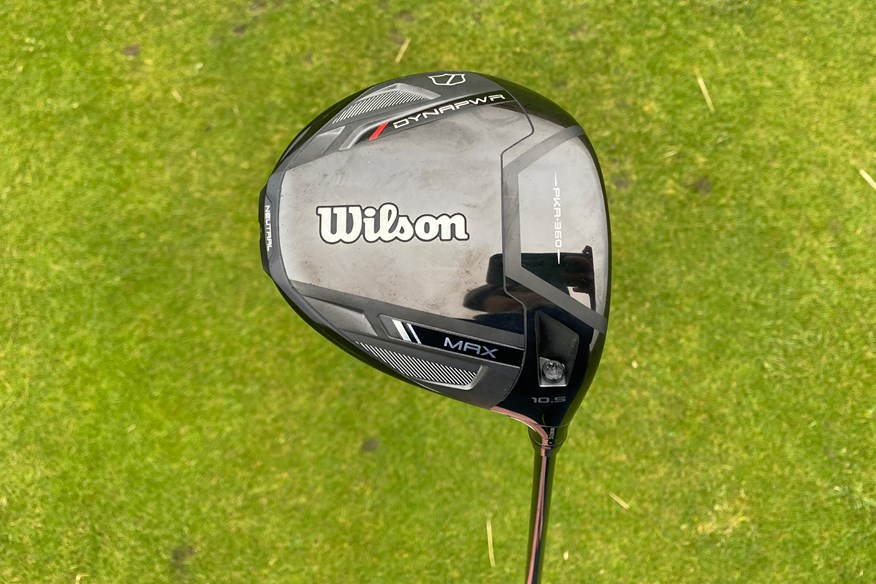

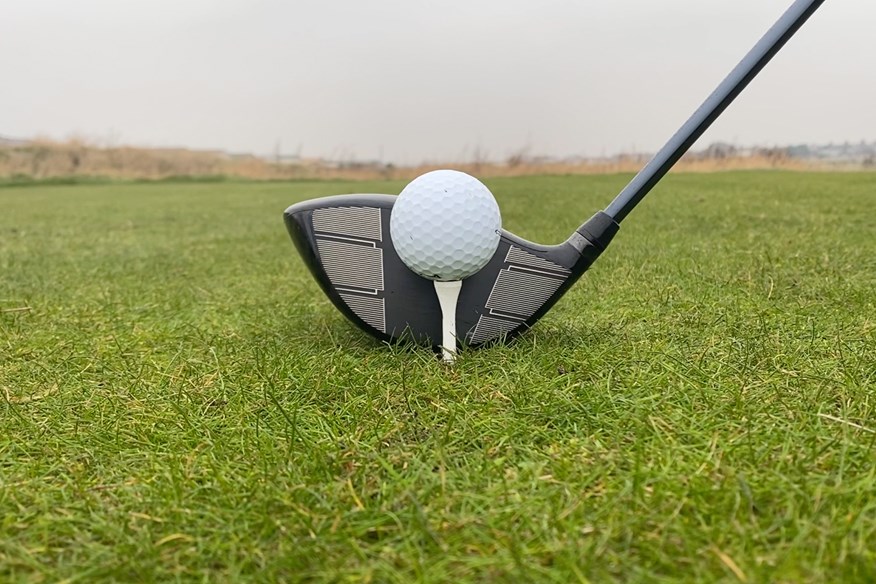
In our testing with the Wilson Dynapower Max, we encountered some unexpected results with our Testing Pro, which were further confirmed in our official review. The left-right dispersion just missed the top spot, while other key performance metrics didn’t quite impress. Despite this, we would still recommend this driver to amateur golfers looking for extra help in finding the fairway, though its distance performance needs improvement to compete with the leaders in this category. For the high handicap golfer, this provides seriously impressive accuracy across the entire face.
TG Test Pro Data:
Ball Speed: 161.5 mph | Backspin: 2887 rpm | Carry: 273.2 yds | L-R Dispersion: 18.7 yds
Read our full Wilson Dynapower Max Driver review.
Pros
- Lots of driver for the money.
- Designed for club golfers and very forgiving.
- Great looking head shape.
Cons
- Overall distance significantly lacking.
| Lofts | / 9° / 10.5° / 12° / 12° Lite |
| Stock shafts | UST LIN-Q M40 Red 5/6 | UST Helium NCT 4 Lightweight |
| Stock grip | Lamkin Crossline 360. |
Sneakily impressive with outrageous value for money
Best value for money
While the Mizuno ST-230 Max may not offer the same premium feel as some of the other drivers in this test, the performance numbers certainly speak for themselves. With impressive ball speed, spin control, and distance, this driver is a solid choice for any club golfer in 2025, offering great value for both performance and price. Most beginners/high handicappers won't want to spend too much money in the early phases of their golfing career, so this is the ideal recommendation.
TG Test Pro Data
Ball Speed: 162.4 mph | Backspin: 2519 rpm | Carry: 281.7 yds | L-R Dispersion: 32.3yds
Pros
- One of the longest in this category.
- Beautiful looking driver.
Cons
- Feel can be improved across the face - feels quite dull.
| Lofts | 9.5° / 10.5° / 12° |
| Stock shafts | Aldila Ascent Red, Fujikura Motore X, Mitsubishi Chemical Kai'Li Blue |
| Stock grip | Golf Pride Tour Velvet Cord 360 |
A slice-busting and confidence-inspiring driver to help boost your consistency.
Wilson’s research demonstrated that 68% of the shots hit by average golfers occurred out of the toe-half of the face. With this knowledge in mind, Wilson has created a face that’s 5% bigger, with a deeper toe section, ideal for both confidence and forgiveness. A cleverly designed face bulge (from toe to heel) helps disguise the Launch Pad’s closed face at address which contributed to shots finishing an average of 13.5 yards further left during our testing.
Read our full Wilson Launch Pad driver review.
Pros
- Easy to launch
- Face geometry specifically targeted at high handicappers
- Improved aesthetics
Cons
- More suitable options for non-slicers
| Lofts | 9°, 10.5°, 13° |
| Stock shafts | Project X |
| Adjustable hosel | No |
| Stock grips | Wilson Staff Midsize (men's), Wilson Staff Performance (women's) |
One of the lightest and most forgiving drivers on the market.
Often with lightweight drivers, there is little excess material that can be assigned to help forgive off-center strikes. However, as the Air-X weighs around 35g less than some of its competitors, Cobra has added some heel-biased weighting to help straighten up slices and make it easier to find the fairway.
Read more in this full Cobra Air-X driver review.
Pros
- Ultra-light driver to help slower swing speeds
- The weight rests lower to provide forgiveness
- An attractive price point for beginners to the game
Cons
- Fast improvers may require more weight
| Lofts | 9.5°, 10.5°, 11.5° |
| Stock shafts | ULTRALITE 40 shaft (S, R, Lite); ULTRALITE 40 shaft in ladies flex |
| Adjustable hosel | No |
| Stock grips | vLamkin REL Standard (58R) – Black (41g) |
Maximum forgiveness without sacrifices for all abilities.
Best for all abilities
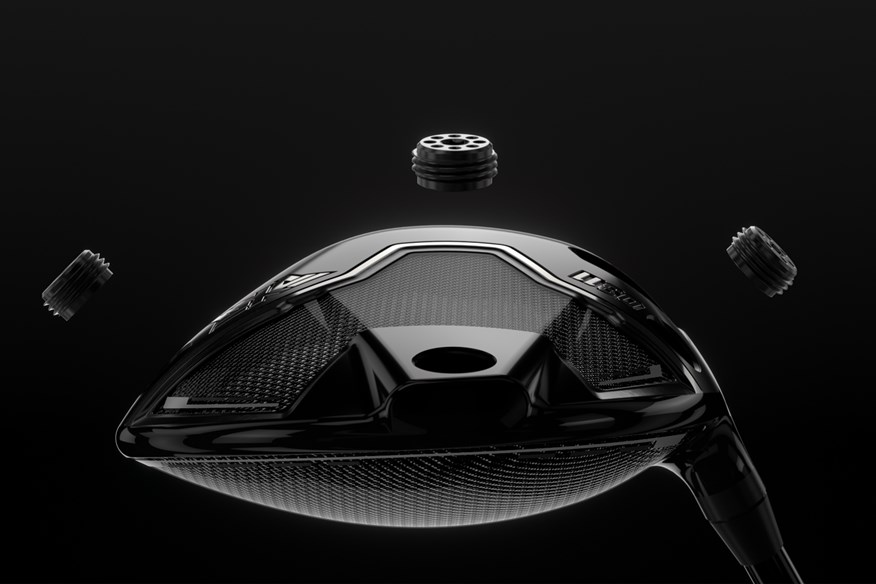

Thanks to the lower and further-back center of gravity (CG), PXG’s engineers have created a combination that promotes a high launch angle with a low spin rate, which is said to deliver both increased distance and greater forgiveness. There are other models that we feel have more forgiveness and could be suited better to a higher handicap player, but this will all be down to the player.
Read our full PXG 0311 Black Ops driver review.
Pros
- PXG Black Ops drivers look the business, sound explosive, and feel exceptional.
- The unique high launch and low spinning combination is highly appealing.
- There's a good selection of stock shafts plus lots of premium upgrade choices.
- PXG's weight and length fitting capability is second to none.
Cons
- Keep an eye on the PXG website as prices can fluctuate regularly.
| Lofts | 8° / 9° / 10.5° / 12.5° |
| Stock shafts | A range of premium shaft options are available. |
| Stock grip | PXG Z5 Black as standard. |
Best Golf Drivers For High Handicappers 2025: The Data
Below is the data from our independent testing of the most forgiving drivers available in 2025. You can read about all the other models in our golf club review pages.
| Manufacturer | Model | Loft (°) | Clubhead Speed (mph) | Ball Speed (mph) (+/- SD) | Carry Distance (yds) (+/- SD) | Spin Total (rpm) (+/- SD) | Launch Angle (°) | Height (yds) | Descent Angle (°) | L-R Dispersion (yds) |
| Callaway | Elyte X | 10.5 | 116.0 | 163.9 (1.9) | 282.2 (7.9) | 2,585 (421) | 11.9 | 35.4 | 40.5 | 26.7 |
| Ping | G440 Max | 10.5 | 115.1 | 163.1 (1.3) | 281.8 (5.7) | 2,702 (344) | 12.9 | 39.9 | 43.7 | 31.9 |
| Mizuno | ST-Max | 10.5 | 115.1 | 162.4 (1.6) | 281.7 (8.0) | 2,519 (435) | 12.8 | 37.3 | 42.1 | 32.3 |
| Cleveland | HiBore XL | 10.5 | 113.6 | 160.3 (1.4) | 277.9 (3.9) | 2,561 (225) | 12.5 | 36.7 | 41.9 | 24.7 |
| Cobra | DarkSpeed-Adapt Max K | 10.5 | 114.6 | 160.6 (0.4) | 276.1 (6.8) | 2,646 (319) | 12.2 | 36.0 | 41.8 | 33.5 |
| Cobra | DarkSpeed-Adapt Max D | 10.5 | 116.7 | 163.3 (0.5) | 276.1 (6.8) | 2,963 (263) | 13.0 | 42.1 | 45.3 | 29.2 |
| TaylorMade | Qi35 Max | 10.5 | 115.8 | 162.3 (1.6) | 275.4 (4.6) | 2,825 (418) | 11.4 | 35.7 | 41.3 | 16.7 |
| Ping | G440 SFT | 10.5 | 115.9 | 161.8 (1.8) | 275.3 (5.4) | 2,859 (412) | 13.7 | 41.9 | 46.8 | 42.5 |
| Wilson | DynaPower Max | 10.5 | 113.9 | 161.5 (1.1) | 273.2 (5.9) | 2,887 (281) | 12.6 | 38.8 | 44.0 | 18.7 |
| PXG | Black Ops (Rear) | 10.5 | 113.2 | 162.5 (1.8) | 278.0 (5.9) | 2,696 (221) | 12.0 | 36.7 | 42.1 | 41.9 |
Best Drivers for Beginners and High Handicappers: Buying Guide
Choosing a new driver is a decision not to be rushed. Do your research thoroughly and make sure you’re investing in the club that will take your game to the next level. That’s critical for all clubs, but particularly as second to your putter, your driver should be the club you reach for the most.
However, as a beginner or higher handicap golfer, we understand that sometimes pulling out driver on the tee is not always the most confidence-inspiring option. That’s why this ‘best guide’ has only selected models of drivers designed and engineered specifically with the attributes demanded from this target group of golfers. If you find your game to be a little more advanced, there are also some great options for those mid-handicap players too.
Here are the key things you might want to prioritize when it comes to selecting your perfect fairway finder.
Forgiveness
This is a word sprayed around in the golf world more than your tee shots. But what does it mean and why is forgiveness important? Scientifically speaking, forgiveness is quantified using MOI (moment of inertia), measured in grams per centimeter squared, and defines how resistant the club face is to twisting on impact. Higher MOIs will provide greater forgiveness by keeping the clubface square with your alignment at the point of impact.
To put the numbers in context, drivers with MOIs of over 9,000g-cm2 are typically at the highest end of the MOI spectrum and worth looking out for in the manufacturer’s specifications. In other words, a forgiving driver will help you find more fairways more often and will reduce the severity of those offline shots.
Weight distribution
Research is driving the optimal positioning of weight across the club head to achieve specific outcomes. When it comes to forgiving drivers, the weight will usually be distributed toward the back of the head as this will promote a launch angle that will help you get the ball airborne and knock off those yards.
The swing path of many new and high-handicap golfers typically slices across the face of the ball causing a left-to-right trajectory (for a right-handed player). This is why, as well as easy launching, drivers for this caliber of player usually will have built-in draw-bias, or even adjustable weighting so you can customize based on the severity of your slice.
Custom fitting
It is often overlooked, but dialing in your optimal driver set-up through a custom fitting session will likely be of more benefit than the slight performance edge you hope to achieve by selecting one driver over another.
Swing speed
Beginners and high-handicap players are likely to sit slightly below the average club golfer swing speed of approximately 93mph. If this rings true for your game then it is worth considering some of the lighter-weight options on this list. Manufacturers in this space have trimmed any unnecessary mass from the club head, shaft, and grip to make it easier for players to swing faster without swinging harder. Furthermore, some of this shaved-off weight is typically redistributed to other parts of the club head to help promote those enviable high-launching draws.
Budget
As with most things in the golf world, prices for drivers can vary considerably. Value for money is subjective and therefore you should spend however much you feel comfortable with, be it a premium model, or one with a more competitive price point. Powerhouse driver brands such as Ping, TaylorMade, and Callaway will typically be positioned at the top end of the market, however, there is excellent value (with performance) to be found with other brands such as PXG, Wilson, and Cobra.
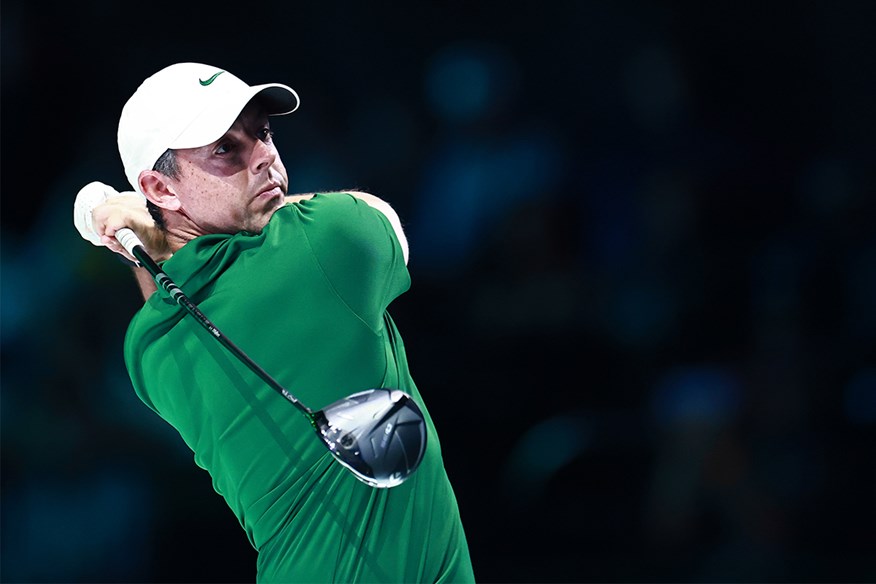
Best Drivers for Beginners and High Handicappers: FAQs
What should I look for in a beginner driver?
For many beginner golfers, forgiveness is the most important factor to look for in a new driver. This is because less skilled golfers lack the accuracy of more proficient players and are more prone to off-center strikes and cutting across the ball, leading to inconsistent ball trajectories. Therefore, beginners should look for one of the most forgiving drivers that are easy to launch and help to straighten out offline shots.
How do I choose a new driver?
When choosing a new driver, it is crucial to consider your specific game before filtering down the options most suited to you. Things to keep in mind are your swing speed, typical ball flight, level of forgiveness required, and obviously your budget. Most of the major manufacturers have multiple driver models designed with particular types of players in mind.
What loft driver should a high handicap use?
A high-handicap golfer should typically look to use a driver with a loft of approximately 10.5°. This club face angle will help to get the ball airborne consistently which might be something less skilled golfers struggle with. Those who find this particularly challenging may want to experiment with lofts of 11° and above. Very skilled and professional golfers aim to reduce spin rate when taking driver and will opt for lofts around 9°.
What is a high-handicap golfer?
Players with a handicap of 20 and above are considered high-handicap golfers and will usually shoot scores in the mid to late 90s, although this can vary a lot from one round to the next. A mid-handicap golfer between 10 and 20 will typically shoot a score in the low 80s to mid-90s, while single-figure handicappers will aim to post rounds of 80 and below.
What is MOI?
MOI is a term used in physics to objectively describe how much resistance an object has to turn about its axis. It stands for ‘Moment of Inertia’ and is used by golf club manufacturers to measure the resistance a clubhead has to twist throughout impact. The higher the MOI, the more stable the club is deemed to be. Scores in the region of 10,000 g/cm2 provide the very highest levels of stability and are generally better suited to beginners and high-handicappers.
SUBSCRIBE TO TODAY’S GOLFER: Print and Digital access, discounts and rewards!

